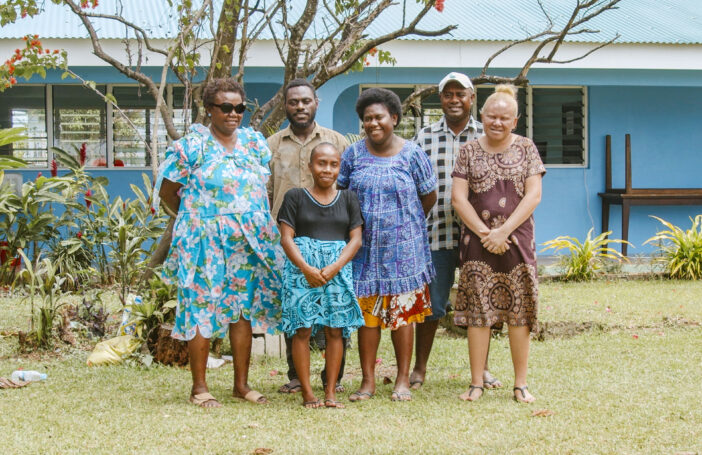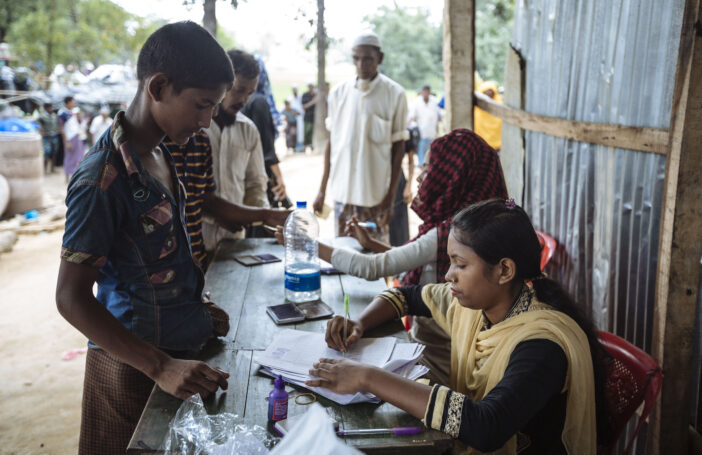The use of cash and vouchers as part of humanitarian responses has increased significantly over the past decade. It is a commitment in the Grand Bargain between some of the world’s largest donors and humanitarian organisations, which aims to get more means into the hands of people in need. Disability inclusion has also become a key part of international humanitarian frameworks, such as the Charter on Inclusion of Persons with Disabilities in Humanitarian Action. While provision of cash is a way to allow aid to take a form which responds to the real needs of people affected by disasters, barriers remain to the participation of persons with disabilities in such schemes.
In a recent study, we explored which practices make cash transfer as inclusive as possible. We examined Cash Transfer Programs (CTP) in six humanitarian responses: Pakistan, Bangladesh, Niger, Indonesia, Zimbabwe and the Philippines from 2014 to 2019. Using a case study approach based on Eisenhardt (1989), we documented the six responses in-depth to understand if persons with disabilities were able to equally participate in and benefit from the programs and which practices of program implementation helped or hindered them in doing so.
Four cash delivery mechanisms were considered:
- Direct cash: paper money
- Bank transfer: electronic transfer through a financial service provider to a bank account
- Wireless transfer: electronic transfer through a financial service provider – recipients withdraw the cash through an affiliated money agent with relevant identification
- Mobile cash: electronic transfer to recipients’ mobile phones in form of electronic cash
We identified five principles for disability-inclusive programming (based on the CBM Disability Inclusive Development Toolkit), and used these to code each of 19 steps of the cash transfer programming cycle of the Cash Learning Partnership (CaLP programme quality toolbox), for inclusive practices. Using cross-case comparison, we identified patterns of successful inclusive practice.
What our data suggests…
- All cash delivery mechanisms come with some physical barriers for persons with disabilities, but some are more accessible than others. The delivery through mobile cash is the most accessible, as funds are directly transferred to recipients’ e-wallets without the need to physically access a cash distribution point. However, direct cash is more accessible than bank or electronic transfers as implementing organisations can exercise more control over the physical accessibility of direct cash distribution than over the accessibility of ATMs or informal banking outlets.
- Inclusive programming must include support to persons with disabilities to overcome physical and institutional accessibility barriers. For the distribution of direct cash, physically accessible distribution points are chosen. For bank transfer delivery, inclusion requires opening a bank account or obtaining identification documents and to access the bank’s distribution points. For mobile cash, mobile phones with accessibility features must be provided.
- There is a high risk of failing to identify affected households with persons with disabilities, who are eligible for cash assistance, despite explicit disability-related targeting criteria. The effectiveness of identifying eligible households is increased through the participation of persons with disabilities and organisations of persons with disabilities (OPDs) in targeting.
…versus other research
We held up our findings against Leduc et al. (2016), who reviewed existing literature relating to inclusive humanitarian cash programs. In terms of their recommendations for ensuring disability inclusion in cash transfers, we can draw some relevant conclusions.
- Our research confirms the importance of using OPDs to identify persons with disability. We also suggest that giving formal roles and responsibilities to persons with disabilities in the targeting process improves the effectiveness of identifying eligible households.
- Our findings confirm that individual support is needed in a significant number of cases to enable persons with different types of disabilities to understand information materials about the cash delivery modality, if the materials are not provided in accessible formats (i.e. accessible for blind and deaf persons and available in easy to read for persons with mental or learning disabilities).
- Leduc et al. suggest that physical and sensorial access to distribution points is vital. We find that institutional accessibility is also crucial. Opening a bank account for example, can come with requirements that are difficult to fulfil for persons with disabilities, like providing a valid ID card or reproducing a signature. While in certain situations, Leduc et al. recommend the election of a proxy to withdraw funds for persons with disabilities, our findings suggest that there is a real risk of cash transfers being misappropriated by family members or caregivers if control over the access and use of the cash is not given to the person with disabilities themselves.
Conclusion
The key message from this study is that inclusive CTP is not possible with business as usual. The evidence shows that unless organisations review their approaches we will continue to fail to identify persons with disabilities in CTP. It will continue to be difficult if not impossible for them to access cash distribution and we may expose them to protection risks. We need to make significant investments in the accessibility of our CTP programs and in specific support to individuals who need it – built in and budgeted in our programs from the beginning.




